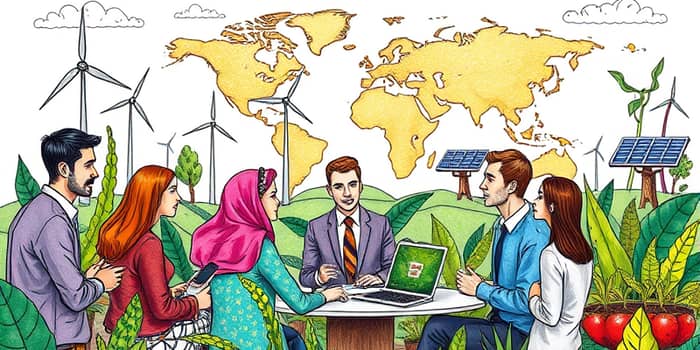
In recent years, global foreign direct investment (FDI) has experienced both growth and volatility, reflecting shifting economic priorities.
As the world grapples with complex challenges, a notable pivot towards sustainability has emerged, redefining investor strategies and development trajectories.
In 2024, overall FDI flows rose by 4% to reach $1.5 trillion, yet this headline figure conceals underlying turbulence.
Developed economies saw inflows decline by 22%, with Europe witnessing a dramatic 58% drop in cross-border investments.
Greenfield investment values held steady, but project finance—especially for critical Sustainable Development Goals (SDGs) sectors—plummeted.
Renewable energy projects, transport infrastructure, and water and sanitation initiatives suffered declines of over 30%.
Amid broader market fluctuations, green FDI is emerging as a powerful force, driven by heightened environmental awareness and policy incentives.
Investors are prioritizing projects that promote environmental protection and resource efficiency, from renewable energy farms to waste-to-energy plants.
Simultaneously, FDI in the digital economy grew by 14%, led by ICT manufacturing, digital services, and semiconductor ventures.
However, this boom is intensely concentrated: 80% of new digital projects are located in just ten countries, highlighting a deep divide.
Despite encouraging signals, the global SDG financing gap now stands at an estimated $4 trillion annually for developing economies.
Without swift and strategic intervention, many nations risk falling further behind on essential goals such as health, education, and clean energy.
Governments and multilateral institutions must channel long-term, inclusive, and sustainability-aligned capital into underserved regions.
This disparity underscores the urgent need for smarter capital deployment over greater capital volume, aligning financing strategies with developmental priorities.
Geopolitical fragmentation and the rise of near-shoring and friend-shoring are reshaping global value chains and investment flows.
Over 80% of investment promotion agencies now report that proximity and allied partnerships will be key determinants for future FDI decisions.
As investors weigh political risks, countries that embrace bold policy reforms will stand out as reliable partners.
Renewable energy remains the crown jewel of sustainable FDI, offering both environmental benefits and financial returns.
Water, sanitation, and transport projects present high developmental impact but require clear incentives to revive investor interest.
Digital infrastructure investments promise transformative growth, yet the digital and green investment boom risks deepening existing inequities.
Inclusive policies that address skill gaps and regulatory barriers are essential to ensure broad-based benefits.
The 2025 Kearney FDI Confidence Index shows that executives prioritize resilience, risk management, and sustainability when selecting investment destinations.
Building on this sentiment, stakeholders can pursue coordinated strategies to unlock funding and drive meaningful impact.
By harmonizing domestic reforms with global best practices, nations can transform volatility into sustained development opportunities.
As traditional FDI patterns evolve, there is a unique opening to redirect capital towards ventures that benefit people and the planet alike.
Stakeholders—including investors, policymakers, and civil society—must embrace a vision of collaborative and purpose-driven growth to overcome existing challenges.
Through targeted policies, innovative financing, and unwavering commitment, we can build a resilient global economy that uplifts all communities.
Now is the time to seize this moment, chart a bold course, and make sustainable FDI the cornerstone of our collective progress.
References













